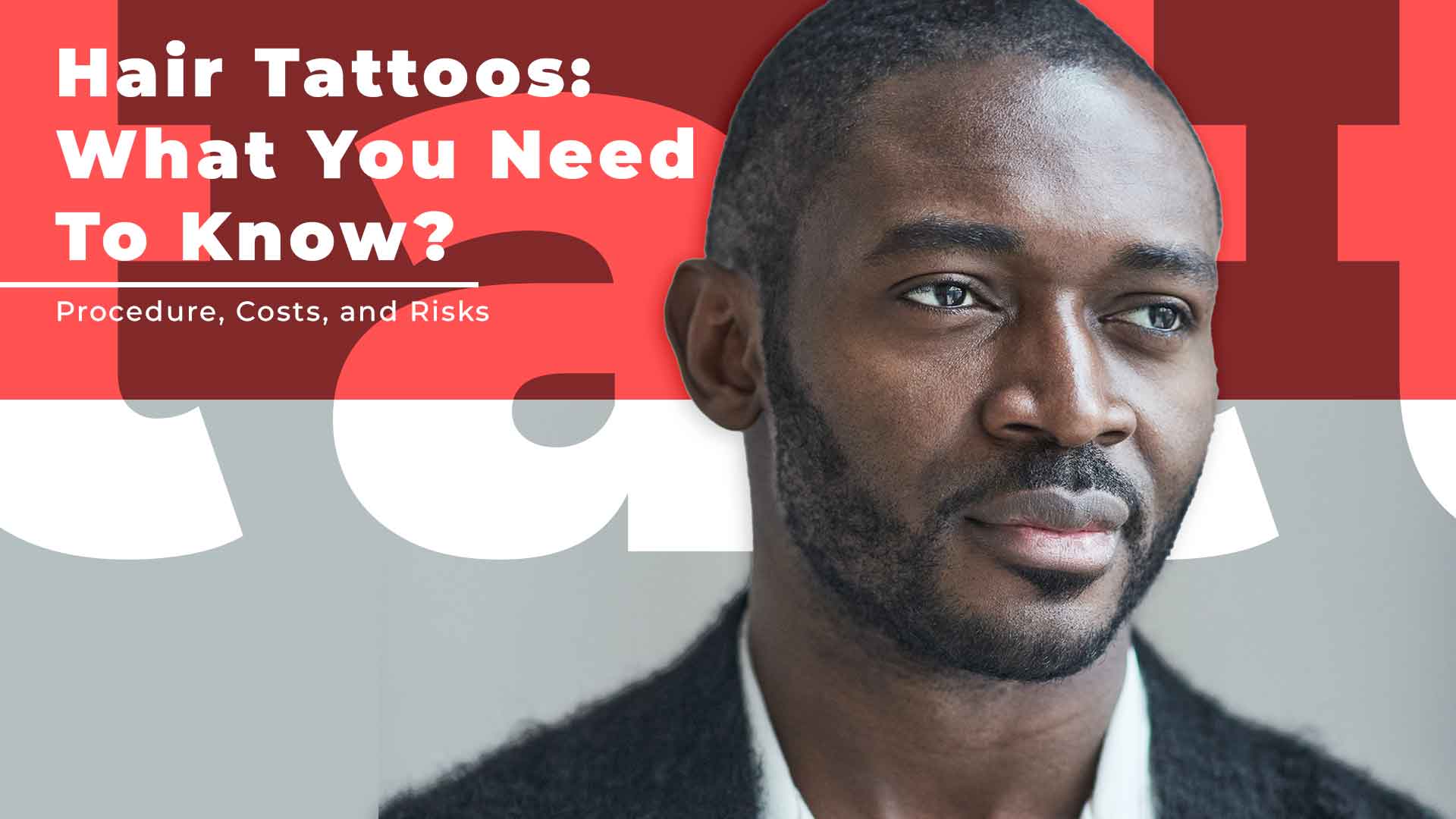Hair loss is a common issue affecting most men at some point in their life. When hair loss becomes a problem, people start looking into effective treatment options. While looking for those, you may have come across “hair tattoos”. Hair tattoos help in hiding hair loss and create the illusion of a full, natural head of hair.
Hair tattoos are often referred to as scalp micropigmentation. It is an alternative procedure to other hair loss treatments, such as Finasteride, Minoxidil, or hair transplant surgery.
In this article, we’ve explained how hair tattoo procedures work, their safety, maintenance as well as the type of results you can expect from this procedure.
Table of Contents
ToggleWhat are Hair Tattoos?
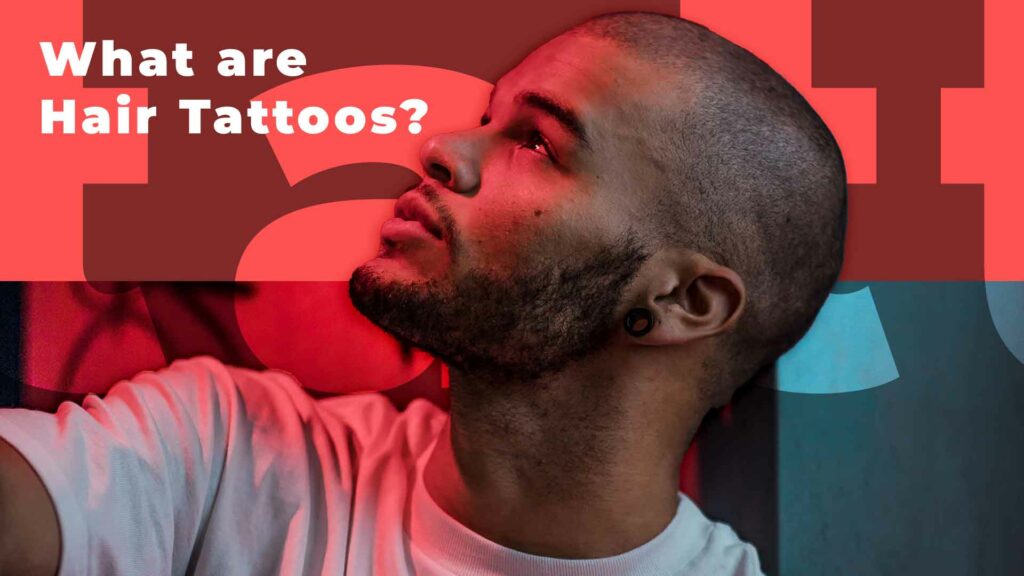
As the name suggests, hair tattoos are exactly what they sound like, tattoos that cover up hair loss and create the appearance of a full head of hair. A hair tattoo can cover your whole scalp if you are experiencing hair thinning, receding hairline, or balding. It is also used to cover up scars on the scalp. Scalp micropigmentation is a technique used to perform hair tattoos. It requires the use of microneedles and specialized inks to create thousands of tiny, layered dots to mimic the appearance of natural hair follicles.
Scalp micropigmentation procedures are customized and use different types of pigments to create the look of real hair. This requires a high level of skill and talent, when performed by a skilled professional, the results of this procedure look very natural. Hair tattoos create the illusion of a full head of short, buzzed hair. However, it can also be used to make your hair look thicker, and denser or cover up any scars on your head.
How Do Hair Tattoos Work?
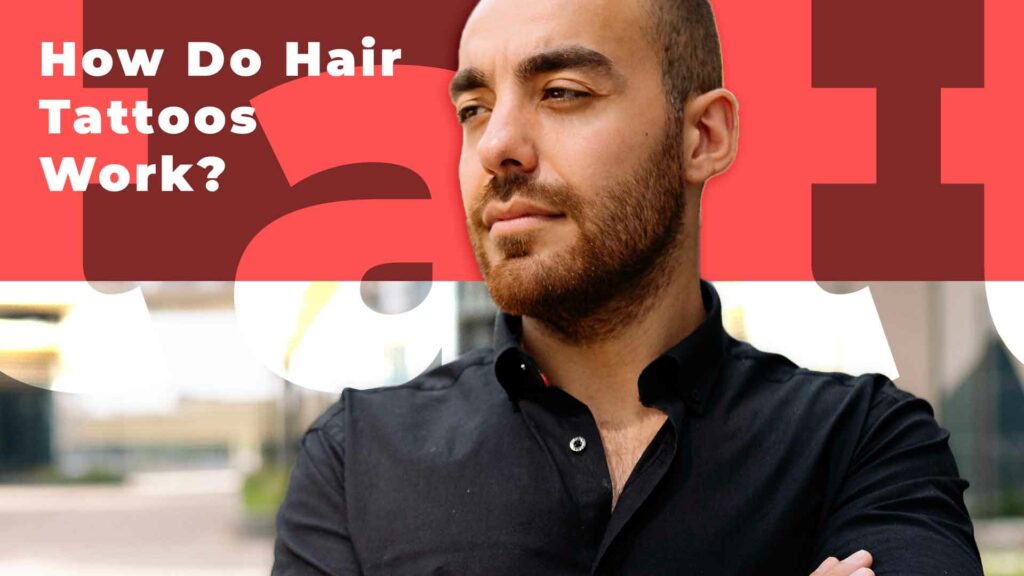
A hair tattoo isn’t quite the same as a regular tattoo. Both procedures involve the same equipment, but a hair tattoo uses microneedles and specialized ink used to create small dots of pigment on the scalp. These microneedles operate at the rate of 100 to 150 times per second, this allows the artist to create a natural, fuller, hair-like pattern on the scalp. The needle comes in contact with the upper dermis and applies pigment to the scalp.
To create an illusion of a natural look, a skilled artist is required. They will apply pigments very close to the surface of the skin and use a range of different dot sizes. The pigment is also chosen depending on your skin color for a natural hair look. A hair tattoo can vary in time, depending on your requirement and the extent of hair loss. On average, tens of thousands of dots need to be inked over several sessions. After this entire process, you will be left with a carefully curated realistic-looking head of hair, giving you a natural appearance.
Are Hair Tattoos Safe?
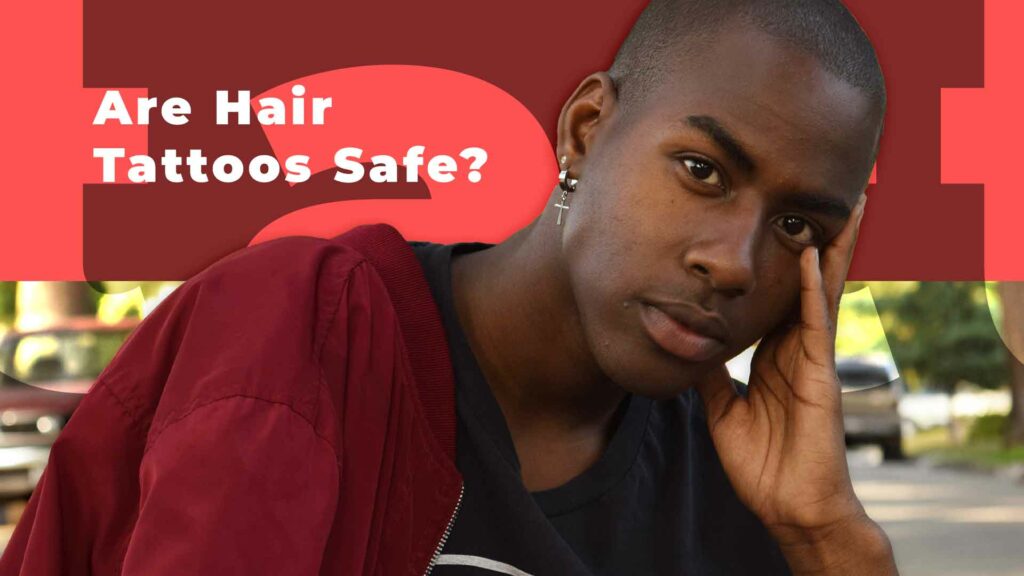
Although a safe procedure, possible complications of scalp pigmentation can occur. These complications include skin infections caused by contaminated packaging, tattoo ink, or needles and reactions to ingredients used in artificial pigments.
There isn’t enough scientific evidence of the long-term safety of scalp micropigmentation. It is a relatively new procedure, so data on its safety is limited. Available research has found that some pigments used in scalp tattoo procedures can transfer to other parts of the body, including the lymph nodes.
Also note, that this is a time-consuming procedure that requires several sessions to achieve that natural look. Achieving the desired level of density and coverage can take up to four to five hours per session, and the results aren’t permanent. However, they last for several years before fading out. Repeating the procedure can cost time, effort, and more money.
Always do your own research about the procedure and artist before going under the microneedle. Keep a look out for reviews, type of ink, equipment, and expertise of the tattoo artist. Let your artist know if you have sensitive skin, otherwise, a hair tattoo is a fairly safe procedure.
Who Should Get A Hair Tattoo?
A hair tattoo is suitable for people who are experiencing balding, hair thinning, or have shorter hair. Hair tattoos are less painful and costly than hair transplants. It is perfect for people who do not want a hair transplant but still need a hair loss solution. Hair tattoos should be performed by highly skilled tattoo artists. The results should create an illusion of a natural look. If not done correctly, the procedure can be quite disappointing.
You may Like: Should you shave before a tattoo
Maintenance Of A Hair Tattoo
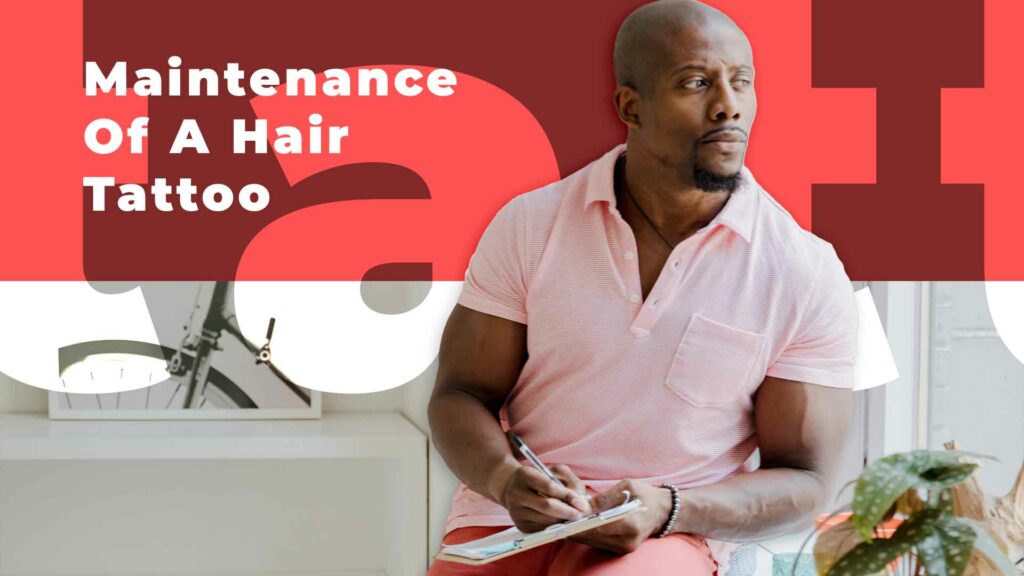
After getting the hair tattoo, you might feel mild discomfort and red dots will appear temporarily on your scalp. They will eventually dry up and fall off with no pain.
Here are some steps to take after having a hair tattoo to make sure it heals properly.
- Do not shave for around two weeks
- Moisturize your scalp every day for a month after the procedure
- Avoid any heavy exercise that causes perspiring or strain for a short period of time
- Avoid swimming
- Stay out of the direct sunlight for the first month
- Use sunscreen on your scalp, this will help to avoid fading
It is essential to let your tattoo rest and heal. The healing process is fairly simple, you can go about your daily routine with a few limitations for a very short time. Your tattoo artist will discuss maintenance and aftercare thoroughly with you. Make sure to follow all the instructions properly.
Cost Of Getting A Hair Tattoo
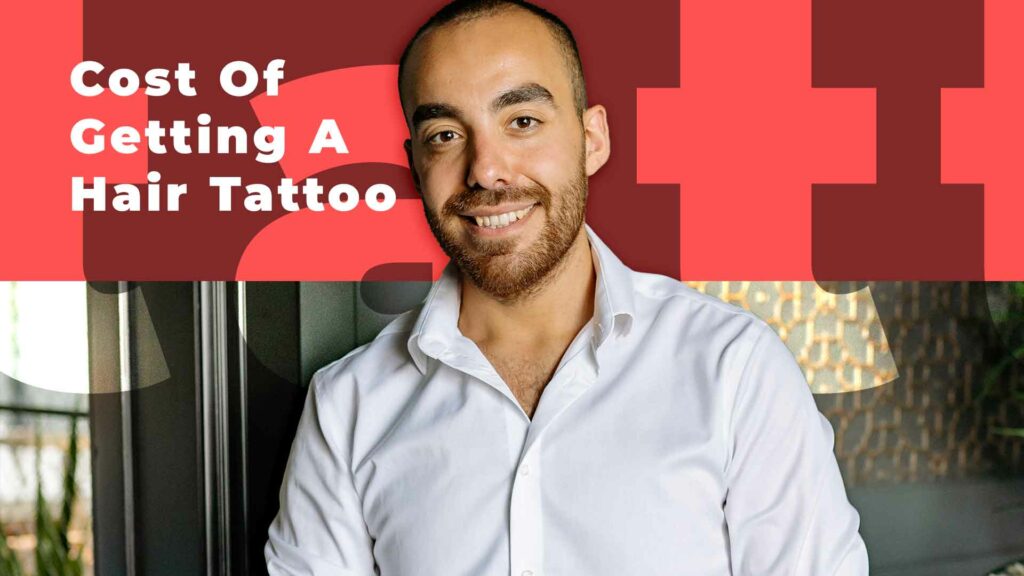
The cost of a hair tattoo will depend on your requirement and the extent of hair loss. It will also depend on the artist you choose and the number of sessions. On average, for most bald men, a hair tattoo will usually cost somewhere between US$1,500 and US$3,000, most commonly falling in the US$1,500 to US$2,000 range. It can also go up to US$4,000 for a full hair tattoo. Do your research about various tattoo artists and cost comparisons before making a commitment.
Bottom Line
A hair tattoo can give you the appearance of a natural, fuller look without the cost and pain of a hair transplant surgery. However, if you are looking for a permanent solution, this isn’t the type of procedure for you. It doesn’t treat the problem of hair loss, rather it disguises it. Do your research and discuss it with your doctor and tattoo artist before making the decision.

